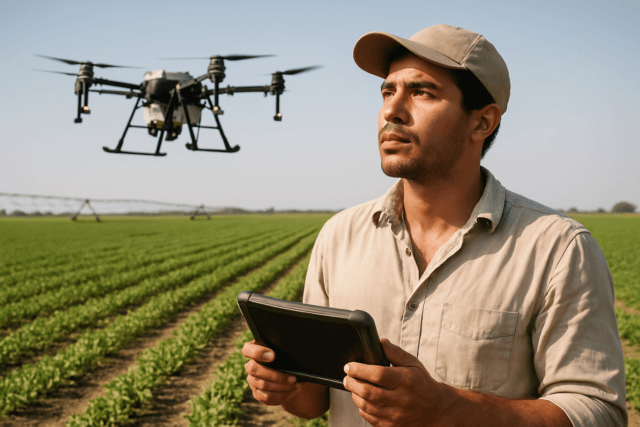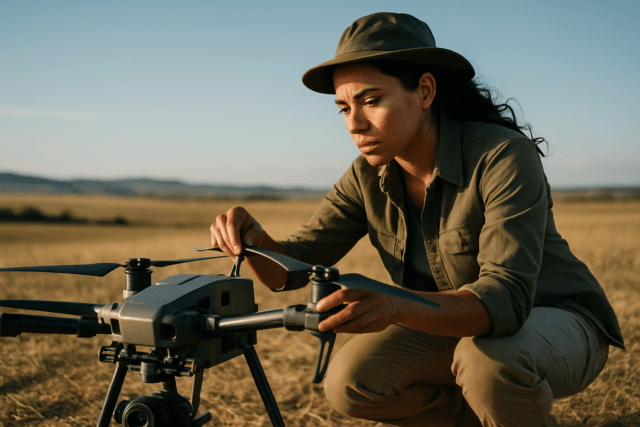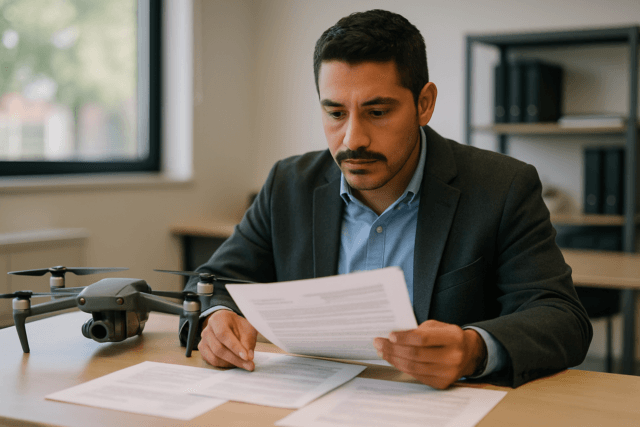The deployment of security drones, or Unmanned Aerial Systems (UAS), has revolutionized surveillance and protective measures across various industries. However, operating these advanced tools necessitates a thorough understanding of complex and evolving airspace regulations. Navigating these rules, which vary significantly by region, is crucial for ensuring safe, legal, and effective security operations.
The Regulatory Landscape: FAA and EASA Frameworks
The primary regulatory bodies governing drone operations in major global regions are the Federal Aviation Administration (FAA) in the United States and the European Union Aviation Safety Agency (EASA) in Europe. Both agencies aim to integrate drones safely into national and international airspace while addressing security and privacy concerns.
United States: FAA Regulations
In the U.S., the FAA is the primary authority for regulating UAS operations. The core of commercial drone operations falls under Part 107 of the Federal Aviation Regulations, which establishes guidelines for pilots and aircraft.
FAA Airspace Classifications
The FAA categorizes airspace into different classes (A, B, C, D, E, and G), each with specific requirements for drone operations:
- Class A Airspace: Generally from 18,000 feet Mean Sea Level (MSL) to 60,000 feet, this is highly controlled airspace primarily for high-altitude aircraft and is typically off-limits for drones.
- Controlled Airspace (Classes B, C, D, E): These airspaces surround airports and require explicit authorization from Air Traffic Control (ATC) for drone operations. Authorization can often be obtained automatically through the Low Altitude Authorization and Notification Capability (LAANC) system or via the FAA DroneZone portal.
- Class G Airspace (Uncontrolled): This is the most common airspace for low-altitude drone flights, up to 400 feet Above Ground Level (AGL), and generally does not require ATC authorization. However, basic FAA rules must still be followed.
Key FAA Rules for Commercial Drone Operations (Part 107)
For security drone operations in the U.S., pilots must obtain a Remote Pilot Certificate (Part 107 license). Eligibility for this certificate includes being at least 16 years old, proficient in English, in suitable physical and mental condition, and passing a written aeronautical knowledge exam. A Transportation Security Administration (TSA) security screening is also required.
Specific operational limitations under Part 107 include:
- Altitude Limit: Drones generally cannot fly higher than 400 feet AGL, unless within 400 feet of a tall structure.
- Visual Line of Sight (VLOS): The drone must remain within the visual line of sight of the remote pilot or a designated visual observer at all times.
- Operations Over People and Moving Vehicles: As of April 21, 2021, Part 107 pilots can fly at night, over people, and over moving vehicles without a waiver, provided specific requirements are met.
- Night Operations: Drones must be equipped with anti-collision lighting visible for at least three statute miles and flashing at a rate of 40-100 times per minute. Pilots must also have completed appropriate night flight training.
- Remote ID: Most commercial drones weighing over 250 grams must broadcast identification and location information during flight.
European Union: EASA Regulations
EASA provides a unified regulatory framework for UAS operations across EU member states, classifying drone operations into three main categories based on risk levels: Open, Specific, and Certified.
EASA Drone Categories
- Open Category (Low Risk): This covers most recreational and small commercial drone activities. Drones in this category must meet CE marking requirements and be operated within visual line of sight. It is further subdivided into A1, A2, and A3 based on drone weight and proximity to people. For instance, A1 allows flying over people (not assemblies), while A3 requires flying far from people and buildings (at least 150 meters).
- Specific Category (Medium Risk): For operations outside the Open category but not requiring full certification, this category necessitates an operational risk assessment and authorization from the competent authority.
- Certified Category (High Risk): This is for high-risk operations, such as carrying passengers or hazardous goods, and requires certification of the drone, operator, and pilot, similar to manned aviation.
EASA regulations also enforce geofencing to prevent drones from entering restricted areas.
Restrictions and Sensitive Locations for Security Drones
Both the FAA and EASA have established no-fly zones and restricted airspaces crucial for security drone operators to be aware of:
- Critical Infrastructure: Drones are prohibited from flying over designated national security sensitive facilities, including military bases, national landmarks (e.g., Statue of Liberty, Hoover Dam), and certain critical infrastructure like nuclear power plants. These restrictions typically apply from the ground up to 400 feet AGL. The FAA may impose temporary flight restrictions (TFRs) over public venues and other locations for security reasons.
- Airports: Flying near airports requires specific authorizations in controlled airspace. Drone operators must avoid interfering with airport operations and yield to all other aircraft.
- Prisons and Jails: Many states prohibit drone flights over correctional facilities.
- Military Areas: Restricted and prohibited areas, often military training zones or national security sites, are strictly off-limits unless explicit permission is obtained from the controlling agency.
Recent developments in the U.S. include increased restrictions on foreign-manufactured drones, particularly from Chinese companies, due to national security concerns. This is prompting public safety agencies to transition to compliant alternatives. Legislation is also being introduced to codify protections against unauthorized drone activity over critical infrastructure.
Privacy and Data Collection Concerns
Beyond airspace management, the use of drones for surveillance, particularly in security contexts, raises significant privacy concerns. While the FAA primarily regulates aviation safety, state and local governments in the U.S. have enacted legislation addressing privacy implications, with many requiring law enforcement to obtain a warrant for surveillance purposes. Similarly, in the EU, drone operators collecting personal data must comply with data protection regulations such as the GDPR.
Organizations using security drones must implement measures to ensure compliance, including regular audits, ongoing training for operators, and robust data management practices to protect collected information. Distinguishing between lawful and unlawful drone use remains a key challenge, emphasizing the need for clear protocols and public awareness regarding drone regulations.
Evolving Regulations and Future Trends
Drone regulations are continually evolving to keep pace with technological advancements and new use cases. Future trends are likely to include expanded Beyond Visual Line of Sight (BVLOS) operations, enhancements to Remote ID systems, and new regulations for autonomous operations and urban air mobility (UAM). The focus will remain on enhancing safety, integrating new technologies, and addressing cybersecurity challenges.





